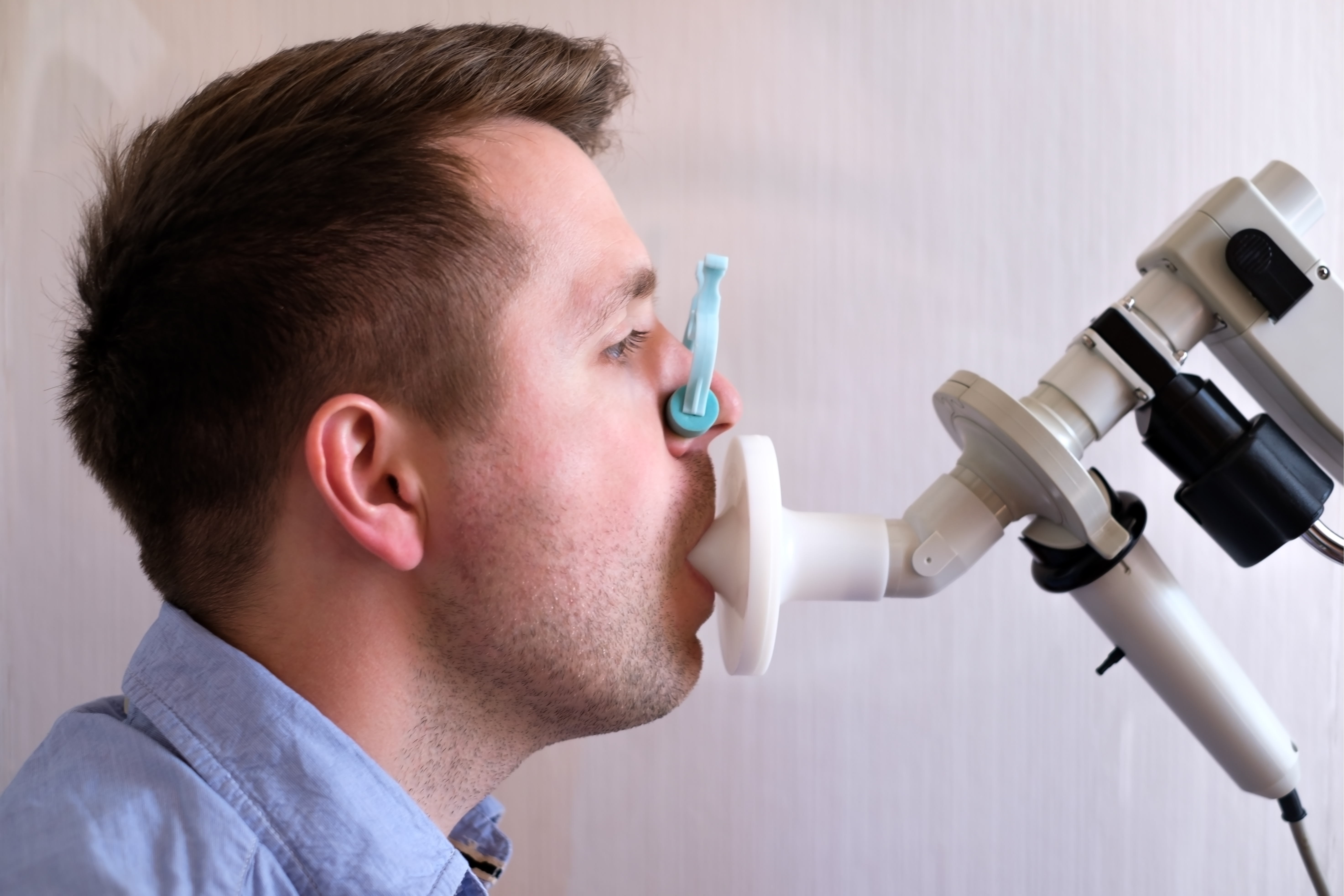/2553328-56a1c9c25f9b58b7d0c2a657.jpg)
Hi, good night, This article will bring about healthy lung test Understanding Total Lung Capacity see in full
Total lung capacity (TLC) is the maximum volume of air the lungs can hold. It is measured by assessing the total amount of air in the lungs after taking the deepest breath possible. Lung plethysmography, one of several , is used to determine TLC, and this assessment of lung function can assist in diagnosing and evaluating different types of lung conditions.
:max_bytes(150000):strip_icc()/lung-test-56a148df3df78cf772692e44.jpg)
Purpose of Test
Your doctor may want to test your total lung capacity for several reasons:
- To diagnosis lung diseases and differentiate restrictive (e.g., pulmonary fibrosis) from obstructive (e.g., asthma or , COPD) types.
- To determine the severity of COPD or asthma
- To evaluate if you're a good candidate for lung cancer surgery
The average maximum capacity of a healthy lung is determined by a person's height and varies. The average is approximately 6,100 milliliters (ml), which is equal to six liters, or approximately three large soda bottles' worth of air. This benchmark can help doctors determine if lung function is compromised.
For example, in patients with COPD, the amount of air left in the lungs during the breathing process is usually more than normal. Patients with COPD are often unable to exhale fully, resulting in hyperinflation of the lungs.
Additional Testing
is the lung test usually used to diagnose COPD. Unlike lung plethysmography, it does not—on its own—provide information on total lung capacity or lung residual volume (the amount of air left in the lungs after exhalation).

However, together these tests can give your doctor a more complete picture of your condition.
Lung plethysmography is more accurate than spirometry in terms of measuring the air capacity of your lungs, but it is sometimes not used due to its technical difficulties.
Risks and Contraindications
Lung plethysmography is safe, but you may experience slight side effects, including dizziness, lightheadedness, or shortness of breath.
Because the test takes place inside a clear glass booth that's roughly the size of a phone booth, those with a fear of tight spaces or claustrophobia should talk to their doctor beforehand about tips and techniques for staying calm. Note that you will be able to see outside the booth at all times, and a technician will be present for the duration of the test.
You should not undergo lung plethysmography if you are mentally confused, have poor muscle control or Parkinson's disease, or are on continuous oxygen support that cannot be stopped even temporarily.
Before the Test
The test typically takes about three minutes. It measures changes in air pressure while you're inside the booth to determine how much air you can breathe into your lungs.
To get the most accurate results, avoid the following before the test:
- Smoking (for at least six hours)
- Drinking alcohol (for at least four hours)
- Exercising (for at least six hours)
- Eating a large meal (within two hours)
Your doctor may also instruct you to not take certain medications on the day your TLC will be measured. Be sure to follow your doctor's instructions precisely.
In addition, wear loose, comfortable clothing that will allow you to breathe deeply (nothing too restrictive around your waist or chest).
During the Test
If your doctor orders a lung plethysmography test to measure your total lung capacity, you can take comfort in knowing this test is relatively simple and painless.
After entering the glass booth and putting on a nose clip, you will be instructed by a respiratory therapist to breathe rapidly through a mouthpiece and tube attached to the testing machine. The test usually takes just three minutes to perform. Sometimes, a tracer gas such as carbon dioxide is included in the air coming from the machine.
After your test, you can resume your normal activities.
Interpreting Results
Because normal TLC results may vary depending on several personal factors, your doctor will determine whether your individual TLC value is normal or abnormal for you. While abnormal values cannot be used to diagnose specific conditions, they can help narrow down the issues that may be causing a problem in your lungs.
Increased Total Lung Capacity
Obstructive lung diseases are those in which air moves out of the lungs at a slower rate than normal.
Increased total lung capacity may indicate such diseases, including:
- COPD
- Cystic fibrosis
With these conditions, the total lung capacity may be increased due to hyperinflation.
COPD does not generally increase TLC. It just increases residual volume after maximum exhalation. Similarly, increased total lung capacity in obstructive airway defect is primarily caused by increased residual volume.
Decreased Total Lung Capacity
In restrictive lung diseases, the lungs are often unable to take a deep breath, which diminished total lung capacity. There are both extrinsic (occur outside the lungs) and intrinsic (occur inside the lungs) diseases that can cause this.
Intrinsic concerns that can cause decreased TLC include, but are not limited to:
- Pneumonia
- Decreased lung volume after lung surgery
Extrinsic concerns that can cause decreased TLC include, but are not limited to:
- Obesity
- Scoliosis
- Pleural effusions
A Word From Verywell
Total lung capacity is one marker of lung function that can be helpful in determining how well a treatment plan is working, how your lung condition is progressing, or whether you're a good candidate for lung surgery. Lung plethysmography is a low-risk, noninvasive test that can provide highly accurate results and arm your doctor with valuable information. Combining TLC measures with results of a spirometry test can provide an even clearer picture of your lung health.
Thanks for your feedback!
Thank you discussion about Understanding Total Lung Capacity hopefully writing this adding insight thank you
Articles this was posted on category healthy lung test, healthy lung breathing test, healthy lung function test,
Comments
Post a Comment